Another year has passed, and with it yet another year of quality television. One thing we think we can all agree on is that there is way too much to possibly watch everything. That’s why you leave it to us to tell you what shows are worth it! Well, kind of. We won’t say for sure that we’ve listed all the best shows out there. We gave it our best, though. Here’s what the staff of the Fandomentals voted as the best shows we watched in 2018.
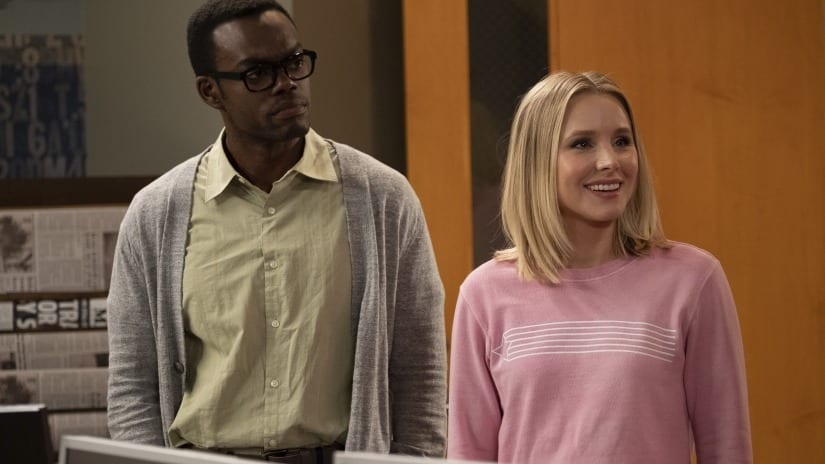
The Good Place
Claire: If you’re a regular visitor, the fact that The Good Place is one of our all-time favourite shows probably comes as no surprise. Michael Schur’s comedy about Eleanor Shellstrop, “an Arizona trash bag” who thinks she ended up in the Good Place, the atheist equivalent of heaven, and then tries to actually become a good person with the help of ethics professor Chidi Anagonye to stay has remained an utter delight over the course of its third season.
Over the course of the first and second season, Eleanor, Chidi and their friends Jason, probably the dumbest person you will ever meet, and Tahani, a mean giraffe who’s also a beautiful but selfish socialite, discovered that they are not, in fact, in the Good Place but rather in a neighborhood designed by the demon Michael to torture them eternally masquerading as a Good Place. As Eleanor keeps figuring out Michael’s plan and endangering his very existence, Michael decides to team up with the four humans to save his skin and get them into the real Good Place over the course of season two. With the help of Janet, an android/robot/all powerful being programmed to make everyone’s life easier, the four humans and one demon manage to reach the All-Powerful Judge Gen, who grants Eleanor, Chidi, Tahani, and Jason a second chance on Earth to see if they can actually become better people even without knowing what will happen after death – a question that then takes up essentially most of the third season.
The third season could have easily become a repetition of seasons one and two, but instead, it allows the human characters to get closure on some of the issues that turned them into bad people in the first place while simultaneously allowing Eleanor and Chidi as well as Janet, Jason, and Tahani to explore their romantic relationships in what might be some of the least annoying love triangles I have ever seen. It also finally gives Chidi, the Mister Morality, a long-awaited ethics conundrum induced breakdown that almost every other character has had the chance to experience before ending with the reveal that something must be deeply wrong with the way people are sorted into either the Good or the Bad Place – a reveal that could have easily avoided by just declaring that people have become worse than ever over the last 500 years.
And that’s what makes The Good Place such a good show: it’s not just deeply funny and very clever, it is also fundamentally empathetic and optimistic, filled to the brim with love for both humanity as a whole and humans as individuals and an unwavering belief in their capacity to become better people. It’s asking basic questions about human nature, such as “can we fundamentally become better people and if yes, how?” and it is answering them quite clearly and, in my opinion, in the best possible way: “yes, we can become better people and we can do it through our connections with other people – which are also the reason we should try to become better people”. Chidi, I think, says it most perfectly at the end of season 2, after Eleanor has her second moral crisis:
“Why choose to be good every day if there is no guaranteed reward we can count on, now or in the afterlife? I argue that we choose to be good because of our bonds with other people and our innate desire to treat them with dignity. Simply put, we are not in this alone.”
And if that isn’t both a beautiful and a deeply relevant message for a TV show to have, I honestly don’t know what is.
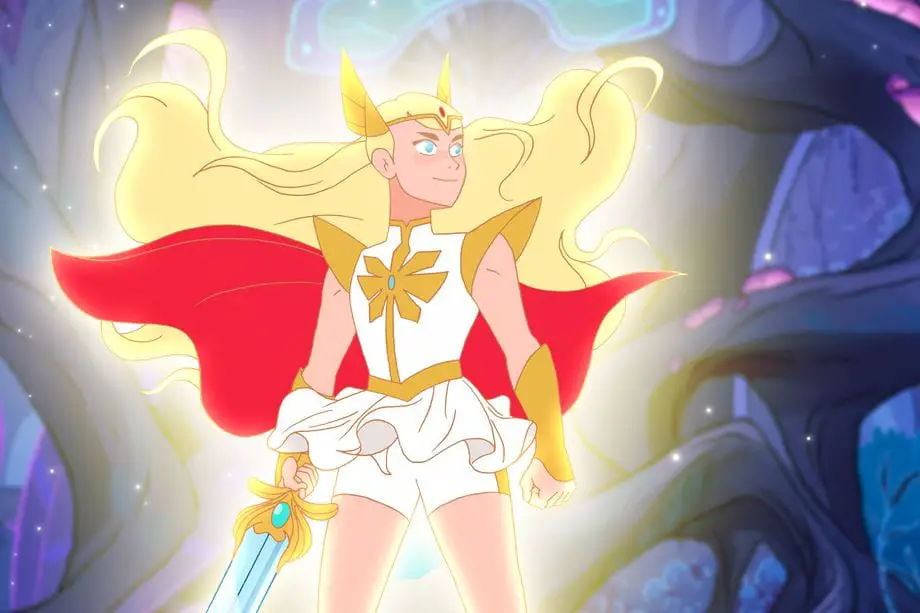
She-Ra and the Princesses of Power
Szofi: The new version of the 1985-86 show She-Ra: Princess of Power is just one in a long line of remakes. Except, She-Ra and the Princesses of Power stands out as a particularly clever reimagination and an excellent piece of children’s entertainment.
Just like its predecessor, She-Ra takes place in the magical Etheria and follows the young Adora as she joins the Resistance in their fight against the evil Horde. Transformations, mystery and lore, princesses with magical powers and friendship as the ultimate power. On the surface, She-Ra might seem like another dumbed down cartoon made for kids where everything’s made of rainbows and glitter. Though the animation itself is not all that impressive, the story, the character dynamics and the show as a whole is much, much more than all that.
The twist comes in that it is mostly about friendship and rainbows and glitter, unashamedly so. She-Ra is great because it is traditionally “girly” and cheesy at times but never loses its substance and stays genuine. It shows that there’s strength in all this, not in spite but often because of the cheesy aspects. And, perhaps most importantly of all, it doesn’t look down on its target demographic. It’s a “kids’ show” that portrays nuance and complexities while still being accessible and a truly enjoyable series.
The 2010s have been a good decade for kids’ animation: The Legend of Korra, Gravity Falls, Steven Universe and the recently ended Adventure Time are just some examples. It’s not surprising that we would get something as clever and as meaningful as these other series but She-Ra feels like a breath of fresh air nonetheless. It manages to update the 80s show in crucial ways and reimagines it for not only the 21st century but for this era in particular.
In its first 13 episodes, it established its themes of inclusivity and perseverance and has already touched on some complex issues. The episode “Promise” in particular shows just how seriously She-Ra takes character development and the potential that this series has. As a 21-year-old I’m not exactly the target demographic but I’m excited to see where this show goes, both because I personally enjoyed its first season and because I’m happy that children can grow up watching She-Ra and the likes.
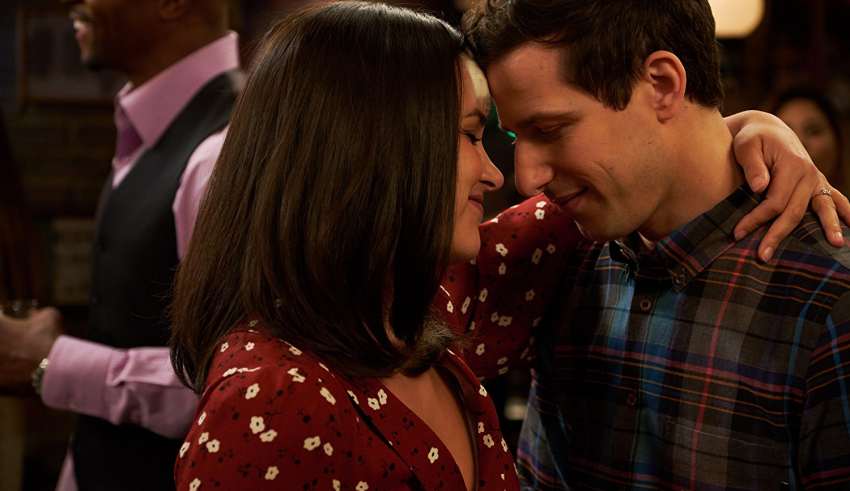
Brooklyn 99
Jordan: It was truly a rollercoaster year for everyone’s favourite New York Police precinct. From Detective Rosa Diaz (Stephanie Beatriz) coming out as a bisexual woman to her colleagues and parents, to the Peraltiago wedding, being unceremoniously canceled by Fox only to be revived a few days later by NBC, 2018 had it all.
The ensemble sitcom remains one of the most effortlessly diverse shows on television. Andre Braugher (Captain Raymond Holt), Terry Crews (Terry Jeffords), Andy Samberg (Jake Peralta), Melissa Fumero (Amy Santiago), Joe LoTruglio (Charles Boyle), and Chelsea Peretti (Gina Linetti) join Beatriz in rounding out one of the most talented casts working today.
There are a lot of things that make Brooklyn 99 a great TV show. There is the fact that it manages to straddle both high and low-brow comedy. There is the fact that it knows how to explore issues of race and gender in a comedic way without making women and people of colour the punchline. There is its ability to handle something complex like police brutality maturely in the course of a 22-minute episode. It really is a piece of media that offers something for pretty much everyone and yet somehow doesn’t suffer at all in quality for doing so.
Brooklyn 99 is something that made everyone scream “what the hell?!” when it was canceled and then thank their deity of choice when it was revived. Season six kicks off in January 2019 and we’re all waiting with bated breath to see how the end of season five cliffhanger will be resolved and what it will mean for the precinct. If you haven’t already, do yourself the biggest of favours and give this series a crack. It’ll make you happy.
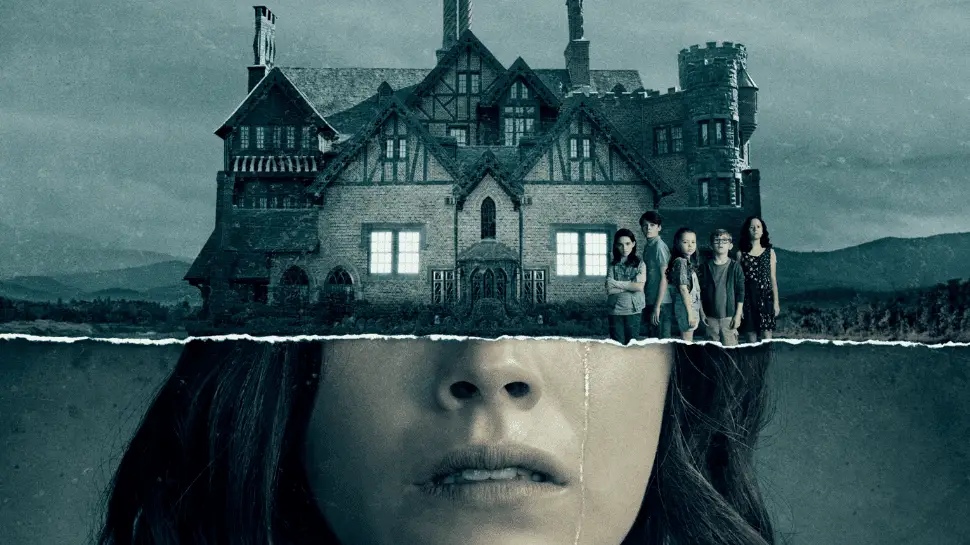
The Haunting of Hill House
Dayana: The Haunting of Hill House is the kind of the horror story that works because of its attention to dread and creeping tension rather than a score building to a reaction-inducing jump scare. That’s not to say Hill House doesn’t use the regular conventions of horror. There are jump scares, uneasy music, and blurry figures lurking in the background. But what makes the horror here work so well is that it’s grounded in tragedy.
The Haunting of Hill House is the story of a family, The Crain’s. It’s not a story of a family first and then horror but rather the Crain’s story is horror. We’re told of this family’s tragedies and then spend the rest of the season watching how they came to be. Along the way, we learn more about each member, both who they were and how that past has shaped them. It only makes the inevitable tragedy all the worse. Especially when the deeper truths of the family’s worse days are revealed.
Most of the time, even when the series relies on those classic staples of horror its woven into the family’s story. There is one jump scare, in particular, that isn’t just there to make the viewer jump. It serves as a story beat that comes at the right moment to help push the characters in the direction they need.
The series is stunning from a technical point as well. Episode six especially uses cinematography that is breathtaking to behold.
Hill House works so well because it truly gets you invested in its characters. It makes you root for them, even when you know their story doesn’t end well. It builds its horror slowly, unveiling a layer at a time. Each layer deeper reveals a bit more of how personal the hauntings of the Crain’s are. It’s in the intimacy where the true dread comes true.
It’s one of the best horrors of the years because of how personal it is. It’s one of the best series because of how the crafts the narrative around its characters. The tragedy of the Crain’s is what makes the series so compelling. Everything that went into crafting the series is what made it amazing.
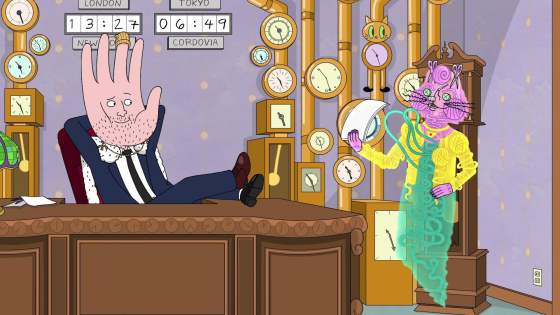
Bojack Horseman
Dan: After every season of Bojack Horseman, the general consensus among the fanbase has been: “There’s no way they can top that!” But somehow, unlike seemingly every other adult animated series (including sometimes rival Rick & Morty), Bojack has not even begun to peak as it completes its fifth season. Thanks to the show’s well-anchored, yet fluid, cast of characters, perfectly formulated balance of comedy and pathos, and experimental approach to storytelling, Bojack remains arguably the best original animated series, if not best series overall, on Netflix today.
Season Five of Bojack Horseman follows up four seasons of heavy focus on the titular character and begins with Bojack (Will Arnett, as dry and ever) in seemingly the best place we’ve seen him. With our sad horseman seemingly well for the first time ever, the focus of the show instead moves to the still-broken people who make up the rest of the main cast. Diane (Alison Brie) and Mr. Peanutbutter (Paul F. Tompkins, who does his best dramatic work this season) have ended their divorce and trying to move on through either work (Diane’s work with clickbait site Croosh) or a new girlfriend (PB’s new beau, the chatty Instagram influencer Pickled Aplenty). Todd (Aaron Paul) is now openly ace but still struggles to define his identity.
And Princess Carolyn (Amy Sedaris, once the one put-together person out of the bunch) is struggling to navigate the chaos of the adoption system while producing her first show. And Bojack himself, weaving in and out of the other storylines as needed, spends the whole season backsliding until his problems become front and center yet again as the show goes to the outright darkest place it ever has before.
Mental illness, like Bojack and Diane’s depression or PB’s insecurity, remains the core drama of the show, but getting out of Bojack’s head a bit lets the show dig deep into the rest of the cast’s experience. Princess Carolyn, in particular, gets a fantastic episode that touches on class, family, and identity as she returns home to rural North Carolina to look into adoption. Thanks to a heartfelt but chillingly accurate performance from David Sedaris as PC’s mother Cutie Cutie Cupcake, we get a glimpse at all of the fears that have driven PC for five seasons and continue to influence her as she looks for a child. But that realism and drama are balanced with the show’s whip-smart dialogue, visual humor, and mastery of bathos to not depress you quite so much that you turn the show-off.
The past seasons of Bojack all featured one or two episodes that experimented with the show’s animated sitcom format, like Season Three’s “Fish Out of Water” or Season Four’s “Stupid Piece of Sh*t.” But Season Five ramps things up with three high-concept episodes really stretch the medium to its limit. The most talked about episode has easily been “Free Churro,” a one-horse monologue at Beatrice Horseman’s funeral. Not only does Will Arnett show off his drama chops, but he also has to carry the comedy of the part all on his lonesome. It’s 26 minutes of nothing but Bojack and is absolutely fascinating.
But for the first time, the writers experiment with the other characters as well. Diane’s spotlight episode feels almost like an adapted piece of short fiction, weaving in imagery and drama as Diane narrates her in-progress listicle for Croosh detailing her visit to Vietnam. Finally, Todd and Carolyn, and the rest of the cast, get the focus in the downright bizarre “INT. SUB.” Told as a conversation between Diane’s therapist and her wife, the company dispute negotiator. Not only does the episode get extremely meta as the two acknowledge the holes and structure of their story, but the bizarre names they give the characters to hide their identities (Bobo the Angsty Zebra, Mr. Chocolate Hazelnut Spread, a Tangled Fog of Pulsating Yearning in the Shape of a Woman, etc.) are reflected in the animation. As the cast expands, so too does the chaos on screen. The chaos and humor all leads up to an incredibly dark callback to one of Bojack’s biggest mistakes, one that will end up sending the entire season off the rails.
Trust me when I say the hype behind Bojack Horseman is fully justified, and that now is as good a time as any to binge it from start to finish as we wait for Season Six. Some have even found it’s approach to mental illness and personal trauma therapeutic. It’s funny, affecting, and real in ways most live-action dramas can’t even come close to. So stick that in your Plumbus and smoke it.
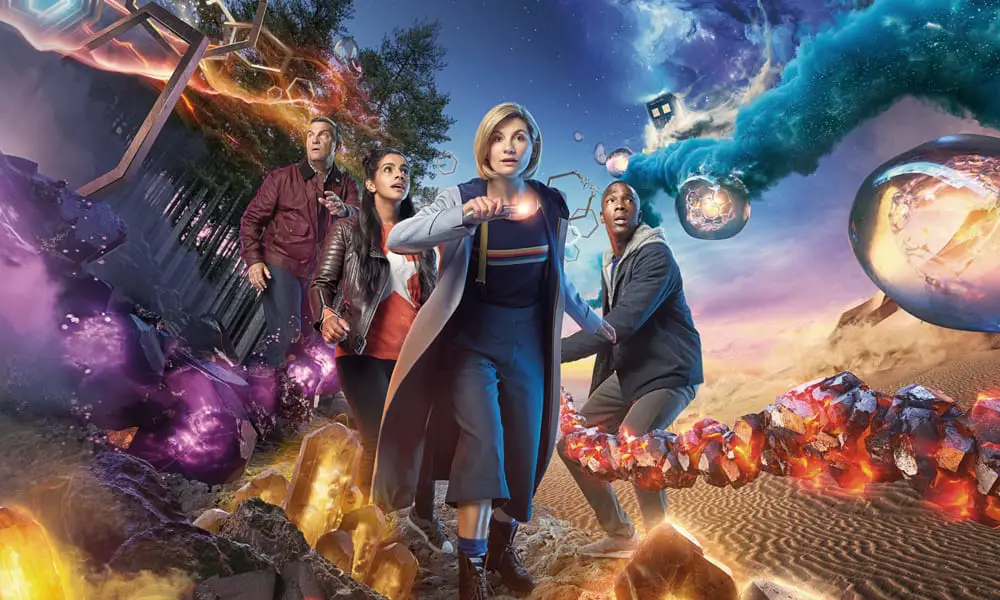
Doctor Who
Kori: Summer of 2017 had the internets atwitter with rumors running rampant on who the new Doctor would be to step in after Peter Capaldi’s Twelve. To add to the excitement, Steven Moffat was officially stepping down as showrunner, and Broadchurch’s Chris Chibnall was taking over.
With bated breath we watch a teaser reveal make history. The Doctor was finally a woman! But wait, could Jodie Whittaker capture the essence of a madman(woman) with a box? We’ve only seen her in serious roles like Broadchurch, or Trust Me! (Well, maybe for y’all, she had an excellent turn in Attack the Block back in 2011.)
We needn’t have worried. As more news came out we saw a hard shift from the epic, universe-ending storylines, and the “most specialist companions to ever companion.” And we also saw some much-needed diversity that was 55 years overdue. Three companions, now “fam”, including the show’s first ever South Asian companion (Mandip Gill), joining Tosin Cole and Bradley Walsh. That’s not where the diversity stopped. Also for the first time, we saw PoC writers joining the writing room, and we saw Segun Akinola step in as the show’s musical composer/scorer, taking over Murray Gold’s longtime position.
So what did this give us? In my opinion, a long overdue return to form for the show. In recent years there was just too much “epic universal blockbuster” story arcs. Every threat was a world-ending threat and eventually, nothing felt like it was worth caring for anymore. And the companions had become two-dimensional super special characters that lacked everyday relatability.
Season 11 brought us Whittaker’s delightfully manic, empathetic, and hyper-talkative Thirteen. It brought us stories that challenged us to examine the ugliness within ourselves instead of scapegoating the scary creatures outside. It made the small people matter again. And it gave us the TARDIS family full of characters that you or I could easily see ourselves in, from Yaz’s yearning to get more out of life, Ryan’s frustration with himself and where he wants to be, and Graham’s insistence on bringing snacks with him wherever the fam goes.
Sure there were some hiccups in the road, but overall it feels like we really do have a fresh start for the Doctor. A new path that emphasizes healing from past wounds (and it’s about time, the Time War ramifications have dragged on for over a decade), looking forward to the future, and embracing all the universe has to offer with bright-eyed wonder again.
In a time when the world feels like it’s burning, Doctor Who offered us hope and a hero who was, above everything, kind.
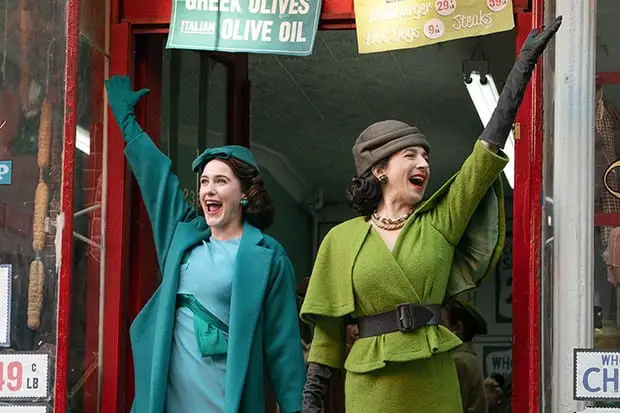
The Marvelous Mrs. Maisel
Alejandra: After a smashing first year, Amy Sherman-Palladino’s Mrs. Maisel came back for her sophomore season as marvelous as ever. Midge Maisel (played by Rachel Brosnahan) advances her career in comedy alongside her manager Susie Myerson (Alex Bornstein) while still navigating her complicated personal life, dabbling in the dating pool for the first time since her separation.
Despite the road blocks presented to them after Midge’s faux pas with fellow comedian Sophie Lennon (Jane Lynch), Midge is steadily doing gigs while still hiding the truth from her family. This constitutes much of the comedy for the first half of the season, and while I did find myself tired of the delayed reveal, I understand where Midge is coming from in not telling her overbearing parents. Adorable as they can be when they try, Abe and Rose Weissman can be a handful, and a bit frustrating. Apart from getting up on stage, which Midge seems to have a good handle on, nothing gets easier for our protagonist.
And it will only get harder. Midge must realize eventually that she cannot have both lives: prim and proper housewife and world-renowned comedian. It’s not possible. And the clash with that reality will be as painful as anything for her.
The Marvelous Mrs. Maisel makes no pretense about the hardships a woman doing comedy in the 1950s would face, both familial (her parents are more of an obstacle than a real help) and professional (Midge gets slammed for talking about pregnancy at one point). But the show manages to present these situations truthfully while still doing it with humor and gobs of charm.
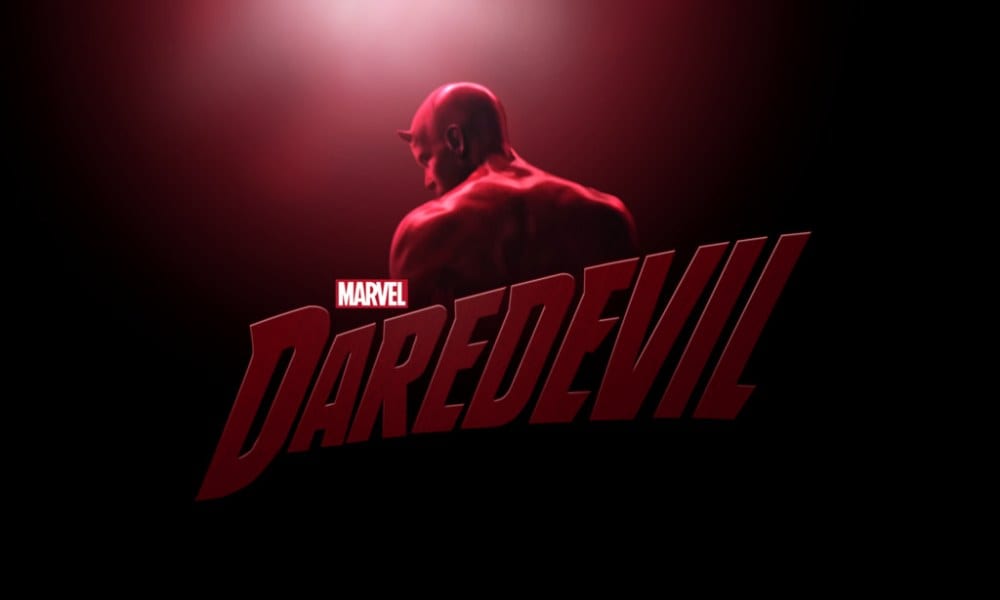
Daredevil
Dan: Why, oh why, did Netflix choose to cancel this show? After Season Two lost its way in Frank Miller’s mystic bullshit, Daredevil was considered the worst of the Netflix MCU not named Iron Fist. But you can’t keep the Devil of Hell’s Kitchen down, and Season Three of Daredevil gives him a swan-song that is perhaps the best visual adaptation of any comic. Ever.
After the nonsense with ninjas that formed the bulk of the last season, new showrunner Erik Oleson took Matt and Co. back to their roots. Not only does Vincent D’Onofrio’s masterful Kingpin return to his rightful place as Big Bad, but the stakes become much more personal after the world-ending dangers of The Hand. The punches feel harder and the wounds seem more real than ever as Matt contends with a seemingly unstoppable Wilson Fisk as he tries yet again to control New York.
The only major addition to the cast is the long-awaited appearance of Bullseye a.k.a Benjamin Poindexter. Acting as Wilson’s heavy, he’s the first enemy to truly be better than Matt in almost every way. He’s not just a threat to Matt in a fight, however, as the emotionless Dex is able to cast a shadow on the Daredevil persona itself thanks to his actions. But, like his boss, Dex is as complex and sympathetic as he is dangerous. While we see why he is how he his, and we see that he’s a victim of Fisk-like everyone else, the show thankfully stops just short of woobifying him as he wreaks havok on the city.
The season is perhaps slower to get to full blast than its predecessors, but the tension and drama builds and builds as time goes by, so that when everything explodes it REALLY explodes. The fights are good as ever, and you almost forget how sad it is that Matt spends almost no time in the red suit. The final fight with Kingpin is not just perfectly choreographed, it is emotional, personal, and the culmination to three seasons of development all releasing in one bloody moment.
The MCU will be a little emptier without Daredevil, but hopefully, the bigwigs at Marvel paid attention to what worked in this show to make the super-human become human. It may have been the Man Without Fear’s swan song, but it’s a hell of a way to go out. Almost makes you wonder if they canceled it because any follow up would fall flat by comparison.

The Americans
Bo: After 6 incredible seasons of spy drama and marital struggles, The Americans finally came to an end in 2018. With its end finally came some of the long-deserved attention and praise it deserved years before. It won an Emmy for Outstanding Writing. Matthew Rhys won for Best Actor. While I may still hold a grudge about Keri Russell never winning anything, to see The Americans finally receive the attention it deserves was gratifying.
And if you have any doubt, it deserved these awards not just for its totality, but for a really great final season. The conflict and bond between Philip and Elizabeth reached peak levels, long-awaited revelations and confrontations occurred, and the finale ended things with the kind of powerful, quiet emotion The Americans excelled at above all else. There was quite a lot to settle in this final season. I can’t say they perfectly solved everything, but they nailed everything that mattered.
Here we are months later, and I still find myself randomly thinking about a damn train station.
Unfortunately, The Americans will never have the fame it should. I hope that anyone reading this decides to give it a shot. You’ll get 6 amazing seasons about marriage, family, and the truth and lies intermingling within. You’ll see some of the best acting and writing any show ever produced. Paige Jennings will bless your life even as your heart breaks for her. Oh, and you’ll get some tense spy action along the way. What’s not to love?
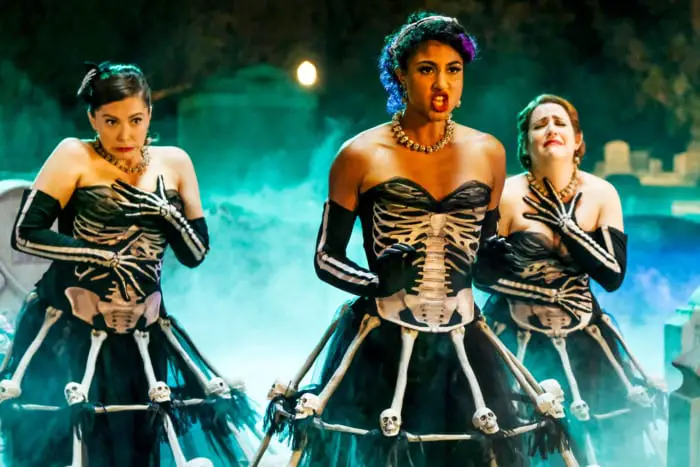
Crazy Ex-Girlfriend
Kylie: Crazy Ex-Girlfriend has been a bit of a Fandomentals darling since it was first suggested by commenters as being good, powerful female Jewish representation in a world where that’s quite rare. It offered that and some, to say the least. This niche musical dramedy is now in its 4th and final season on The CW, closing out a carefully crafted narrative journey that sought to tackle tropes and storytelling conventions surrounding women in media, its namesake included. The show has been unabashed in its optimism, its dorkiness (our protagonist spends the better part of the second episode debating the positioning of a comma in the name of a club), and its examination in the extreme fallibility/vulnerability of humanity.
Season 3 actually concluded with what seemed like a stumble: the prioritization of themes for the apparent sake of it over any kind of logical sense. Have no fear that in the opener of Season 4, it was made abundantly clear that once again, Rebecca Bunch made an impulsive and unhealthy decision that was to be thoroughly deconstructed, and very explicitly criticized by all the supporting cast. Time and time again showrunners Aline Brosh McKenna and Rachel Bloom demonstrate that they know exactly what they are doing.
With just a handful of episodes left, Crazy Ex-Girlfriend has set up what’s sure to be the satisfying resolution, and has done so by meticulously setting back up the opening tension of the show: Rebecca’s relationship to love through the men we’ve already seen her blunder around with for three years. The show even somehow made a recast work, and if that’s not the marketing of quality writing, I’m not sure what is.
Don’t sit this one out. When I think back on any single character, the way they’ve grown has been utterly delightful. But it’s in a way that never ignores the messiness of life, too. Funny, sharp, and chock full of parodic musical numbers, Crazy Ex-Girlfriend firmly deserves its seat on our best of list.

